History, meaning and kinds of shrimp (ebi)
Good-old sushi restaurants do not serve raw shrimp sushi!?
A shrimp sushi was most popular sushi in Japan though tuna sushi is most popular nowadays. Japanese began to eat shrimp sushi from Edo period (1603-1867) according to the picture named Shimazoroi-onna-benkei drawn by Kuniyoshi Utagawa.
A woman in this picture has roll sushi with egg and shrimp sushi on the plate. She also has the sushi box made by sushi restaurant named Matsu-ga-sushi in Ataka town. This sushi restaurant was well known as the most luxury sushi restaurant in Edo area (almost Tokyo area) then.
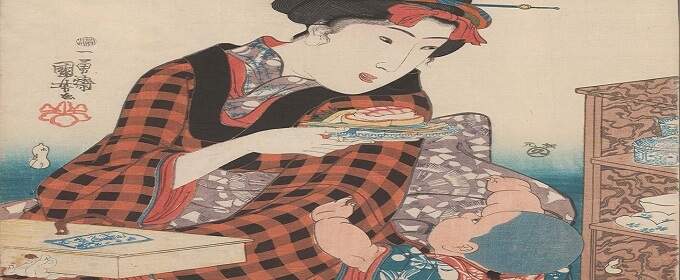
There are two kinds of shrimp sushi now, boiled shrimp sushi and raw shrimp sushi. Both of shrimp sushi are delicious, but are different in type of shrimp. A Japanese tiger prawn is used for cooking boiled shrimp sushi. Spot shrimp and northern shrimp (sweet shrimp) are used for cooking raw shrimp sushi. A Japanese tiger prawn taste better by boiling since taste of it is condensed. On the other hand, spot shrimp and northern shrimp become sticky and mushy by boiling since they are juicy. They taste juicy without cooking.
A spot shrimp is called Botan-ebi in Japan because it looks like peony. Botan means peony, ebi means shrimp. A spot shrimp tastes so sweet, thick and creamy like northern shrimp. However, its meat is more firm than northern shrimp. The price of it is about 5,000 to 9,000 yen per kilogram (about 50 dollars to 90 dollars per 2.2lb). The best season of it is spring or autumn.
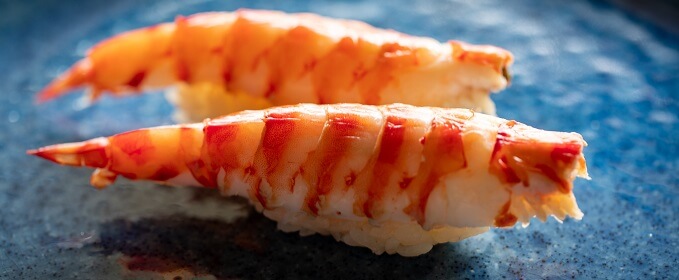
A northern shrimp is called Ama-ebi because it is sweet. Ama shorten from Amai means sweet, ebi means shrimp. A northern shrimp is smaller than spot shrimp, two northern shrimp are served as one sushi. The price of it is about 1,800 to 2,000 yen per kilogram (about 18 dollars to 20 dollars per 2.2lb). The best season of it is different in producing district. The best season of it in Hokkaido area is from March to May. The best season if it in Hokuriku area (Toyama, Ishikawa, Niigata prefecture) is from September to February.
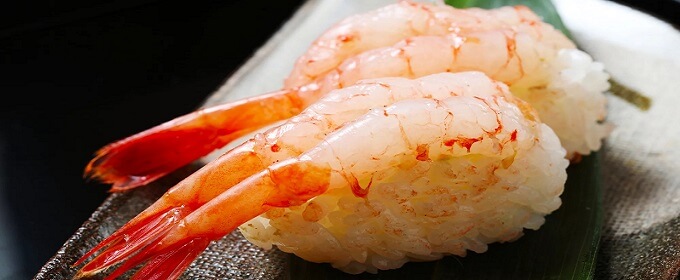
A Japanese tiger prawn is called Kuruma-ebi because it looks like vehicle wheel. Kuruma means car, ebi means shrimp. It is the most popular shrimp in Japan. It is used not only sushi but also Japanese fried dish named Tempura. The price of it is about 5,000 to 6,000 yen per kilogram (about 50 dollars to 60 dollars per 2.2lb). There is no best season of it because of much farmed it. The best season of wild caught it is summer.
A Japanese spiny lobster called Ise-ebi is most expensive shrimp in Japan. The price of it is about 15,000 yen per kilogram (about 150 dollars per 2.2lb). However, most sushi restaurants do not serve it as sushi because of its price, only some sushi restaurants in Mie prefecture serve it as sushi. The fishing port in Mie prefecture is the largest landing port for it. Ise-ebi derived from Ise city in Mie prefecture.
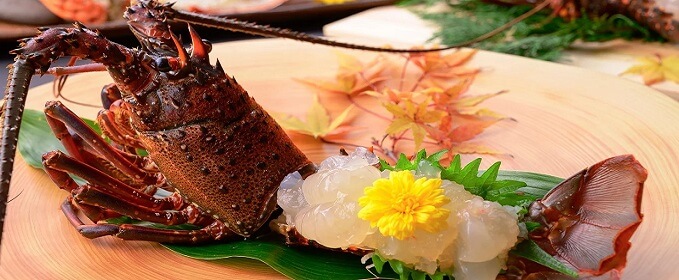
The reason why it is expensive is not only its taste but also its good looks. It is served in dinner of Japanese auspicious event from long ago. However, some Japanese think it is too expensive though its taste is inferior to the taste of Japanese tiger prawn. They say that Ise-ebi looks best but Kuruma-ebi taste best.
A mantis shrimp called Shako in Japan is also cooked as sushi. The good-old sushi restaurants serve it as Edo-style sushi. On the other hand, the major conveyor belt sushi restaurants do not serve it. The reason is uncertain, but it is not popular because of its looks. Not a few Japanese think its looks is yucky.
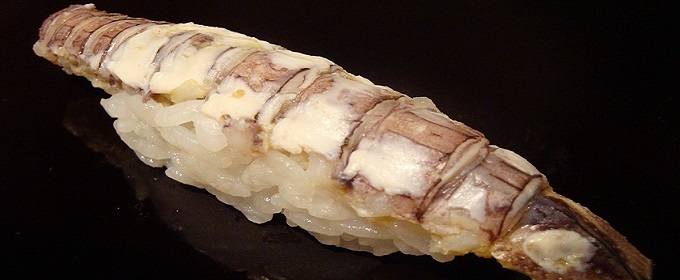
By the way, good-old Edo-style sushi restaurants do not serve not only salmon sushi but also raw shrimp sushi. One of the reasons of that is sushi restaurants in Edo period did not serve them. The other reason is that sushi chefs think Edo-style sushi must be cooked before rolling. These restaurants want to carry on the tradition of Edo-style sushi. You should be careful that if you want to eat shrimp sushi in Japan.
You can enjoy various shrimp dishes including sushi when you travel Japan. If you like sushi and conveyor belt sushi restaurant, you can invest it. Food and life companies (TYO:3563) and Kura Sushi Inc (TYO:2695) are listed in Tokyo Stock Exchange. If you like Japanese shrimps, you can invest Kyokuyo Co. (TYO:3563) which is the largest fishery company in Japan. These companies are also included some ETFs for investing Japanese companies.
- Ikura and Sujiko are little different!?
- Shake means salmon, but they are different!?
- Various crab and crab dishes in Japan!?
- What is Kappa-maki and Kappa?
- Good-old sushi restaurants do not serve raw shrimp sushi!?
- Japanese eat various squid and squid dishes!?
- There are various toro, that is confusing!?
- Various tuna and tuna dishes in Japan!?
- There are various way to use wasabi!?
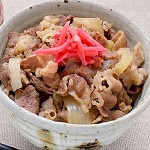 Gyudon
Gyudon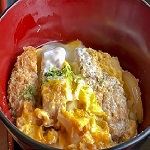 Katsudon
Katsudon Unadon
Unadon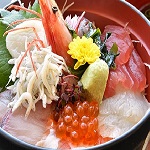 Kaisendon
Kaisendon